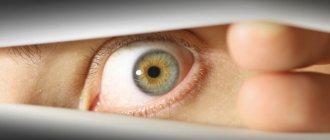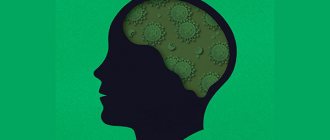- Characteristic
- Risk group
- Polyneuropathy of the extremities
- Lower limbs
- Upper limbs
- Diabetic form
- Diagnostics
- Clinical guidelines
- Treatment
- Therapy in the clinic
- Recovery and rehabilitation
- Home treatment
- Consequences of the diagnosis
Attention!
Drug use causes irreparable harm to health and poses a danger to life!
Alcohol addiction always entails complications. Polyneuropathy is more common than liver cirrhosis or encephalopathy. The success of treatment is significantly influenced by the stage of alcoholism and timely detection of the disease. In the chronic form of the pathology, complications arise in patients: the functioning of the respiratory system and cardiovascular system is disrupted, and the person becomes disabled.
Content:
- Reasons for development
- Symptoms
- Treatment
Alcohol addiction often affects the nervous system. Alcoholic polyneuropathy is a disease in which a large number of peripheral nerves are simultaneously affected.
The clinically pronounced form, according to various sources, is diagnosed in 10–30% of people with chronic alcoholism. In special studies, signs of an asymptomatic course are found in the majority of alcoholics. Pathology is more often detected in males. Usually occurs chronically. The sudden appearance of symptoms is sometimes observed under the influence of provoking factors - hypothermia or prolonged heavy drinking. The rate of progression and severity of manifestations vary. In severe cases, disability cannot be ruled out.
Frequently asked questions about polyneuropathy
What pain does polyneuropathy cause?
Pain varies in nature and can occur unexpectedly or be felt constantly. Mostly, patients experience itching, burning, coldness and chilliness; there are also manifestations of acute cutting and stabbing pain.
How to diagnose polyneuropathy yourself?
This is impossible to do, since only a doctor can differentiate the symptoms, and instrumental methods and laboratory tests are important for making a diagnosis.
How long to treat polyneuropathy?
Treatment of polyneuropathy is a long process under the constant supervision of a doctor.
Reasons for development
Polyneuropathy occurs more often in patients with the third stage of alcoholism . Sometimes the first clinical or instrumental signs are detected already at the second stage. The risk of development increases when consuming methylated spirits, low-quality alcoholic beverages and technical fluids with ethyl alcohol.
The main etiofactor is considered to be the toxic effect of the intermediate product of the breakdown of alcohol, acetaldehyde, on nervous tissue. Constant drinking of alcohol causes this compound to accumulate in the body. The rate of accumulation depends on the individual characteristics of metabolism, primarily the activity of alcohol dehydrogenase and acetaldehyde dehydrogenase. The better these enzymes break down ethanol, the later polyneuropathy forms.
A significant role is played by a lack of vitamin B1 , which affects the state of nervous tissue and the breakdown of ethanol in the liver. Vitamin deficiency occurs for many reasons. These include poor irregular nutrition, lack of appetite during binges and inattention to one’s own health. For many alcoholics, the absorption of nutrients in the intestines deteriorates, which further aggravates the effects of vitamin deficiency.
Symptoms
Depending on the presence and severity of manifestations, three degrees of alcoholic polyneuropathy are distinguished:
- First. No complaints. Signs of polyneuropathy are revealed only during special studies.
- Second. The patient presents typical complaints. During a neurological examination, certain abnormalities are detected. Limb functions are slightly or moderately reduced.
- Third. There are severe functional disorders that limit the patient’s ability to work and daily activity.
The first manifestation is usually paresthesia - changes in sensitivity, including tingling, burning, crawling and slight numbness. At first, patients do not attach much importance to unusual sensations, explaining them by being in an uncomfortable position, or squeezing an arm or leg during sleep.
Over time, paresthesia intensifies , occurs more often, and is complemented by a decrease in pain and temperature sensitivity. The distal parts of the upper and lower extremities—the feet and hands—are most affected. Due to complex sensory disorders, patients feel as if they are wearing gloves on their hands and socks on their feet, interfering with normal perception of bodily signals.
The perception of the surface when walking worsens, the movement is perceived “as if on a cushion of air.” A person poorly recognizes the temperature, structure and other characteristics of an object taken in hand. The rate of progression varies significantly - in some cases the symptom increases rapidly over 1-2 months, in others it gradually intensifies over a year or more.
Against the background of paresthesia, muscle weakness , also more pronounced in the distal parts of the limbs and gradually spreading from the periphery to the center. Subsequently, the ratio of symptoms of polyneuropathy varies. In some patients, muscle weakness comes to the fore; in others, sensory disorders continue to play a major role. The formation of neuropathic pain syndrome is possible.
The lower extremities are almost always involved. Complaints of muscle weakness and impaired sensitivity of the hands are noted in approximately half of the cases. Sometimes the clinical picture is complemented by a deterioration in muscle-joint sensation , which significantly complicates movement due to the inability to sense the position of the legs in space. Vibration sensitivity may be reduced.
In severe cases, paresis and paralysis develop. The gait changes. With the predominance of muscle disorders, stepping is observed - a walking pattern in which a person strongly bends his knees with each step so as not to catch the hanging toe of the foot on the surface. With a gross change in deep sensitivity, a stamping gait is revealed - the patient “drives” his legs into the floor with force, because he does not feel good contact with the surface.
During a neurological examination, the doctor discovers sensitivity disorders , increased, and subsequently decreased tendon reflexes. Muscle tone is reduced, paresis is accompanied by rapidly progressing atrophy. To confirm the diagnosis, electrophysiological studies are performed.
To exclude paraneoplastic syndromes, oncological screening is performed:
- carefully examine the mammary glands (ultrasound and mammography);
- lungs (CT);
- gastrointestinal tract (endoscopic examinations are performed); Ultrasound of the abdominal cavity, pelvis, genital organs;
- if necessary, PET-CT.
It is necessary to understand that drawing up an examination plan is individual for each patient. The polyetiology and different mechanisms of development of the disease, the diversity of the clinical picture require a detailed and comprehensive examination, but despite this, it is still not always possible to identify the cause of the disease. In this case, the diagnosis of idiopathic polyneuropathy is established.
Treatment
Mandatory basic conditions of therapy are cessation of alcohol consumption and normalization of nutrition. Since the disease develops in the later stages of alcoholism, hospitalization in a narcological hospital is often required for complex detoxification and recovery measures. Drug therapy includes the following areas:
- Elimination of pain syndrome. In the treatment of neuropathic pain, the use of anticonvulsants and antidepressants is effective: amitriptyline, venlafaxine, duloxetine, galapentine and pregabalin. Medicines of these groups can be prescribed either separately or simultaneously.
- Eliminate oxidative stress. Alpha lipoic acid preparations reduce the amount of free radicals in tissues and stimulate the production of endogenous antioxidants. Medicines improve blood supply to nerves and nerve conduction, which reduces motor and sensory disorders.
- Correction of hypovitaminosis. B vitamins have affinity for nervous tissue and are widely used in the treatment of diseases of the nervous system. Promote regeneration, activate local metabolism and accumulation of magnesium, which plays an important role in the metabolic processes occurring in nerve cells.
Along with drug therapy, massage and exercise therapy are recommended. Regular exercise therapy prevents the development of contractures and muscle atrophy, allows you to maintain and improve motor skills, increase your ability to work, and improve your ability to self-care.
The patient is explained the causes of alcoholic neuropathy and the importance of maintaining a sober lifestyle to prevent the progression of the disease. Working with a psychologist and participating in groups helps a person cope with feelings, stabilize their emotional state and firmly take the path of abstinence. The method of treating alcoholism is selected individually. Psychological or medicinal coding is possible.
If you stop drinking alcohol, the prognosis is quite favorable. At the height of the disease, the impairments become so pronounced that sometimes a second disability group . Later, in mild cases, the symptoms disappear completely. In severe cases, residual manifestations persist in the long-term period, which do not have a significant effect on work ability or slightly limit it. Drinking alcohol or poor nutrition can trigger a relapse of the pathology.
Diagnostics
When diagnosing polyneuropathy, a doctor may be primarily interested in answers to the following questions:
- Does the patient have any medical conditions such as diabetes or kidney disease?
- When did the symptoms begin?
- Were the symptoms constant or sporadic?
- How severe are the symptoms?
- What causes symptoms to increase or decrease?
- Did anyone in the patient's family have similar symptoms?
- The doctor needs a complete medical history. The doctor will review the patient's medical history, including symptoms, lifestyle, exposure to toxins, bad habits, and family history of neurological diseases.
- During a neurological examination, the doctor can check tendon reflexes, muscle strength and tone, the ability to feel certain sensations, and coordination.
The doctor may order an examination
- Imaging or MRI tests can detect various diseases (including tumors).
- Neurophysiology. Electromyography records electrical activity in muscles, which can help determine whether symptoms, including weakness, are caused by muscle tissue damage or nerve damage. ENMG checks the conduction of impulses along the nerves and allows you to determine the degree of damage to the nerve fibers. Neurophysiological studies of the autonomic nervous system may also be performed - sensory tests that record how the patient feels touch, vibration, cold and heat.
- Nerve biopsy. A doctor may recommend removing a small portion of a nerve, usually a sensory nerve, to examine morphological changes in the nerve to determine the cause of the nerve damage.
- Skin biopsy. In this test, a small portion of skin is removed to examine the number of nerve endings. A decrease in the number of nerve endings indicates neuropathy.
- Laboratory research methods are necessary to exclude various diseases, such as diabetes mellitus, autoimmune diseases, kidney disease, etc.
Literature:
- Peripheral nervous system in normal and pathological conditions: educational manual / N. S. Subbotina; Federal Agency for Education, State. higher educational institution prof. Education Petrozavodsk State univ. – Petrozavodsk: PetrSU Publishing House, 2006. – 129 p.
- Classical neurology: a guide to the peripheral nervous system and chronic pain syndromes / Silantiev Konstantin. – Volgograd: Panorama, 2006 (Volzhsky: Alliance Yugpoligrafkombinat, Volzhsky Polygraphkombinat). – 399 p.
- Private neurology: a textbook for students of medical universities / G. O. Andreeva et al.; edited by M. M. Same. – Moscow: Med. information agency (MIA), 2009. – 574 p.







